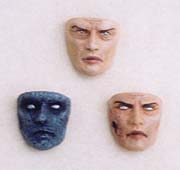There may be no
better introduction to the
phenomenology of the self in cyberspace than what comes of Foucault's
archaeology of resemblance, specifically, the mirroring he unearths as
the primary source of late sixteenth-century epistemology. Within
the period’s “semantic web of resemblance” (17), Foucault discovers aemulatio
or emulation, a degree of “similitude [. . .] freed from the law of place
and [. . .] able to function, without motion,
from a distance” (19). Like our experience
in cyberspace, the
relation
of emulation enables things to imitate one another from one end of the
universe to the other without connection or proximity: by duplicating itself
in a mirror the world abolishes
the distance proper to it; in this way it overcomes the place
allotted
to each thing. (19)
|
|
